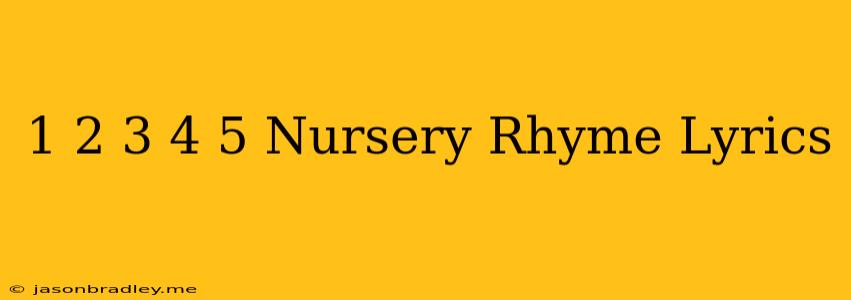One, Two, Three, Four, Five: A Timeless Nursery Rhyme
"One, Two, Three, Four, Five" is a classic nursery rhyme that has been enjoyed by children for generations. It is a simple and catchy tune that helps kids learn to count and introduces them to basic math concepts.
Lyrics:
One, two, three, four, five, Once I caught a fish alive. Six, seven, eight, nine, ten, Then I let it go again.
Why did you let it go? Because it bit my finger so. Which finger did it bite? This little finger on the right.
The History and Significance
While the exact origins of the rhyme are unknown, it is thought to date back to the 19th century. The simplicity of the lyrics and the playful nature of the story make it highly engaging for children. It is a fun way to teach them about counting and numbers in a non-threatening way.
The Importance of Nursery Rhymes
Nursery rhymes like "One, Two, Three, Four, Five" play a crucial role in early childhood development. They help children:
- Develop language skills: The repetitive nature of the lyrics helps with vocabulary development and pronunciation.
- Improve memory and cognitive skills: Learning and reciting rhymes enhances memory and cognitive abilities.
- Introduce basic concepts: Nursery rhymes can introduce children to simple math, science, and social concepts in an enjoyable way.
- Encourage a love of language and literature: They provide a foundation for a lifelong appreciation of storytelling and literature.
Beyond the Rhymes:
"One, Two, Three, Four, Five" is a versatile rhyme that can be used in various ways. Parents and educators can use it:
- For counting games: Have children count along with the rhyme and use their fingers to represent the numbers.
- For singing and dancing: Use the tune to create fun and engaging activities.
- For creative storytelling: Encourage children to create their own stories based on the rhyme.
This timeless rhyme continues to delight children and adults alike. It is a testament to the power of simple yet effective storytelling and its ability to spark imagination and learning.
